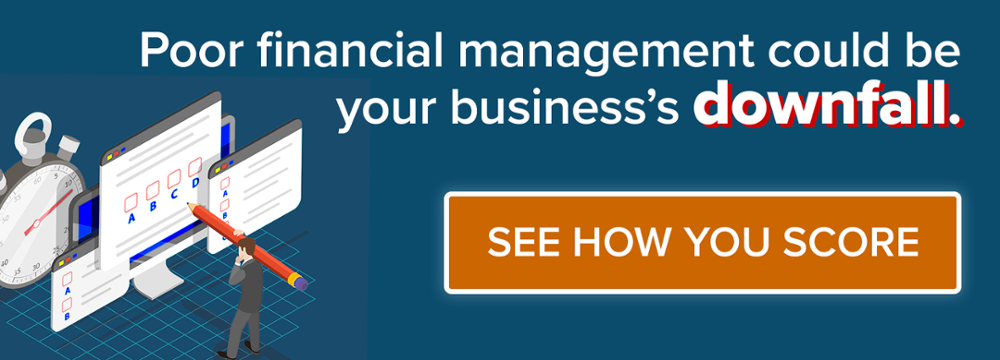6 min read

Meetings. With your plate already overflowing, they can either be the peak or pit of your day. And on top of that- over the past year, business owners have been forced to make major changes to daily operations- including accommodating remote workers.
|
Key Takeaways
|
As a result, more and more companies are holding virtual meetings, and business leaders have had to stay ahead of the curve to keep these meetings productive and efficient. You may have recently heard the term “zoom fatigue.”
Luckily, with a little help from technology, it is possible to run an effective virtual meeting.
Although the meeting format has changed, do not lose sight of the reasons why you hold meetings: to get on the same page, make sure your business is on track, solve problems, brainstorm ideas and solutions.
In other words, meetings exist to help everyone be more productive, stay aligned and meet goals – and with the right steps, virtual meetings can accomplish all of these things.
How to Make Virtual Company Meetings More Effective
1. Maintain Meeting Efficiency
When you're accustomed to conducting meetings in-person, getting used to the flow of virtual meetings can take some adjustment to ensure the time your employees spend away from their core jobs is as efficient and productive as possible. To maximize virtual meeting efficiency and productivity, remember the following:
Streamline Technology
Technical snags can derail a virtual meeting fast, making it difficult to communicate and wasting everyone's time.
Establish and enforce clear technology protocols that all employees must follow.Everyone in your organization should be using the same technology systems.
This will ensure all of your employees have access to the software they need and are well versed in how the platform works before meetings. Streamlining this process will save headaches in the long run.
Be sure to find the right technology to support your team’s remote environment. - It’s important employees have an easy way to communicate internally with team members on both video and instant text chat features. This is an easy way to make sure everyone is staying connected and for bridging the gap to feel more connected with their team.
💡 TIP: For companies that have Microsoft 365, the Microsoft Team chat feature is free - including both the chat tool and videos. Being able to immediately connect with someone visually and audibly makes the transition to remote working more seamless and takes away the feeling of separation. Zoom and Microsoft Teams have been taking the lead in video chat.
Test your technology- Ask that everyone attend in a quiet, professional location to minimize distractions and ensure no one needs to mute their microphones during meetings.
To Video, Or Not To Video?
The million dollar question- should you mandate all employees turn video on?
Since this is still a relatively new reality the business world is facing, a professional standard has not been set yet.
As a rule of thumb, we recommend you encourage video chat but do not force anyone into a situation they are not comfortable in. Video will help personalize the conversations and drive engagement, but not at the risk of making employees feel uneasy.
Stick to the Agenda
Just as you would in person, every virtual meeting should follow an agenda.
We are big fans of the Entrepreneurial Operating System (EOS) framework that includes an outline of important meeting agendas.
In the EOS, an effective meeting on a scale of one to ten is called a level 10 meeting (L10 meeting). The L10 meeting structure can be achieved by following a specific agenda and set of meeting rules that govern how every meeting flows [1].
The first step is to start on time. Ensure everyone gathers five meetings before the meeting is scheduled to begin. So, all attendees should be online by 8:55 am for a 9 am meeting. Then start promptly by spending five minutes sharing good news (personal and professional).
Next, flow into a three-part reporting portion of the meeting when you should spend five minutes reviewing your scorecard, five minutes reviewing your goals ("rocks" in EOS), and five minutes sharing both positive and negative customer/employee headlines or news. If any of these headlines need to be addressed, make a note to discuss them during the issues portion of the meeting.
“The beauty of the EOS framework is that we drive to the point of clarity, and we have one solution that would take one action.”
- Micah Brandeburg, Micah Brandenburg Consulting
After reporting, spend five minutes reviewing the tasks on your to-do list. Aim to cross off at least 90% of tasks each week.
Once the task list has been reviewed, move onto the issues portion of the meeting by identifying, discussing, and solving issues in order of priority. During this portion, you should be moving tasks that came out of resolving issues onto your to-do list for the upcoming week. Altogether, this portion should require about 60 minutes. Any issues not addressed within the allotted hour should be noted for discussion the following week.
“I see so regularly where people are politicking in meetings, or they don't want to call their peer out. The by-product of that is reaching a conclusion, but not having anybody behind that decision. EOS is really the solution for that.”
- Micah Brandenburg, Micah Brandeburg Consulting
Finally, spend five minutes concluding the meeting. Recap to-do items, note any cascading messages that need to be sent to the rest of the team, and ask attendees to rate the meeting's effectiveness/efficiency on a scale of one to ten.
Assign a Facilitator
Given the nature of virtual meeting software, a facilitator is necessary for keeping the meeting on-task in addition to controlling the discussion, audio feed, video feed, and general flow. Assign a facilitator for your virtual meetings in advance. Select someone who has a strong command of your video conference software and who will be able to answer questions or assist attendees with technical issues.
Continue with Meeting Basics
Don't forget about the basics of conducting efficient meetings just because you've gone virtual.
Some employees may need a little reminder of the following:
- Be professional (no attending from the sofa or bedroom)
- Turn off phones or set them to do not disturb
- Set and communicate clear objectives for meetings
- Distribute information or other materials in advance
- Follow an agenda
- Designate someone to record the meeting minutes
- Establish meeting rules (i.e. how it will flow or when there will be time for discussion)
- Take breaks
- Provide opportunities for questions and discussion
Additionally, be sure you end meetings or meeting segments by clearly defining and assigning the next steps. Who will be accountable for what tasks? By when should these items be completed? After the meeting has concluded, follow-up by distributing a thorough copy of the minutes from the meeting.
Minimize Presentations and Use Screen Sharing
As stated above, lengthy presentations are even less captivating in virtual meetings. If you must use slides or present information, be sure to keep it as brief as possible and use a screen sharing function so that your entire team will literally be on the same page throughout.
Capture Meeting Feedback
Your facilitator can read and record real-time feedback from meeting attendees with a smartphone app like Poll Everywhere. This allows facilitators to quickly ask questions to gauge the team's level of understanding or opinion on different meeting points throughout the meeting — without asking employees to do so on the same device they're using to attend the virtual meeting.
As a result, you'll know right away if anything you've gone over needs further clarification or discussion at the moment, instead of waiting until the end of the meeting to answer questions or listen to comments.
Encourage Organized Discussion
Even if you use a polling feature, you should still open up your meetings for some organized discussion. Depending on your software, you can plan to go around the table so to speak at the end of the meeting, giving everyone a chance to comment. If your software has a hand-raising feature, you can also call on attendees, giving them the opportunity to weigh before the meeting wraps up.
2. Maintain Company Culture
While most business owners spend time focusing on concerns about remote work resulting in lagging productivity, they might be neglecting other parts of their companies. There's another aspect of your business that is just as important (if not even more important) as productivity at stake, and that's your company culture.
When you and your employees see each other and interact every workday, it's simpler to cultivate a positive company culture. Creating meaningful connections, offering support, identifying achievements, and providing employees with the positive recognition they deserve — these are all interactions that are more easily had in person.
"Our culture is what ties us together as a team; it's a bunch of micro-interactions,"said Andrew Jackson, the Founder and President of BravoTech, when discussing how to build a high-performing remote workplace.
"Pre-pandemic, there were so many chances for employees to engage with one another — passing in the hallway, a water cooler discussion — but all of these impromptu interactions went away."
- Andrew Jackson, President, Bravo Tech
When you and your employees no longer come into the office every workday, you lose opportunities for the micro-interactions that build community and improve your workplace. As a result, company culture suffers, employees feel less connected to one another, they feel less connected to the company, and there's nothing standing between them and a more enticing offer.
So, how can you use virtual meetings to bolster your company culture?
Start by focusing on virtual team-building. A survey from the Society for Human Resource Management found that 52% of businesses with employees working remotely are not actively conducting any team-building activities. Of those that were conducting team-building activities, the most popular choices were email chains unrelated to work and virtual happy hours [2].
You can select team-building activities for your employees based on how well everyone knows each other. If your team is not very well acquainted, then consider starting your meetings with a quick icebreaker to help everyone get to know one another and get a sense of each other's personalities.
A quick game of "Would you rather?" is always fun. Pose a question like, "Would you rather be without your phone or the internet for a day?" Then go around the circle, so everyone can give a quick response.
If your team is already close, then you could begin virtual meetings with a quick check-in to talk about how everyone is doing. Ask how their families have been managing the pandemic and talk about what everyone is most looking forward to when life can return to normal.
Additionally, it's important to implement technology that makes video conferences possible.
Whether you use software like Microsoft 365, Zoom, or GoToMeeting, your employees should be able to speak face to face during meetings — not only to strengthen social bonds within your team but also to improve communication efficiency during the business portion of your meetings.
While communicating that virtual meetings are video-first, be sure to also provide an audio-only option for employees who might not have access to the high-speed internet that's necessary for conducting virtual video conferences.
Measure Your Virtual Meeting Efficiency with Task-Related Reports and KPIs
Whether your business now operates with remote workers either entirely or partially, you should consider adjusting your management reporting and the KPIs you track regularly to focus on measuring productivity and task-related performance. When shifting to a more efficient virtual meeting design, keep a close eye on your financial scorecards, paying attention to trends, productivity, and people.
[2] https://www.shrm.org/hr-today/news/hr-news/pages/nextchat-virtual-team-building.aspx

.png?width=563&height=144&name=New%20GF%20Logo%20(37).png)

